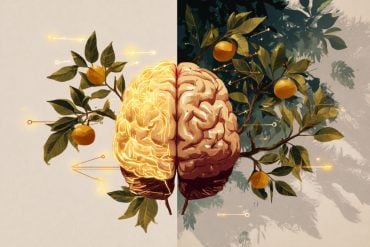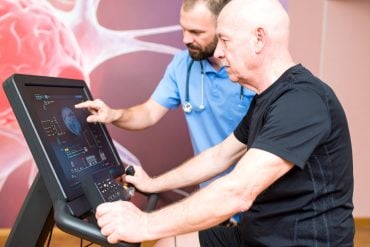Summary: New research reveals how the simple nervous system of C. elegans worms can dramatically reconfigure itself to survive infection. When exposed to harmful bacteria, the worms adapted by rewiring the roles of key neurons and neuromodulators to reduce feeding and resist quiescence.
One neuropeptide, FLP-13, flipped its usual function depending on whether worms faced stress or infection. These findings show that animals can flexibly reuse the same neural components in different combinations to cope with diverse environmental challenges.
Key Facts:
- Neural Repurposing: Neurons and peptides changed functions during infection, revealing unexpected brain flexibility.
- FLP-13 Flip: A single peptide promoted sleep in one context but helped fight lethargy during infection.
- Survival Strategy: Resisting quiescence with FLP-13 extended worm survival against deadly bacteria.
Source: Picower Institute at MIT
Whether you are a person about town or a worm in a dish, life can throw all kinds of circumstances your way.
What you need is a nervous system flexible enough to cope. In a new study, MIT neuroscientists show how even a simple animal can switch many gears in its brain to muster an adaptive response to a deadly infection.

When C. elegans worms fed on infectious Pseudomonas bacteria that made them sick (as it does to humans), they responded similarly to many animals including people. They ate less and became more lethargic.
When the researchers looked across the nervous system to see how that sickness behavior happened, they discovered that the worms had completely revamped the roles of several of its 302 neurons and some of the peptides they secrete across the brain to modulate behavior.
Systems that responded to stress in one case or satiety in another became reconfigured to cope with the infection.
“This is a question of how do you adapt to your environment with the highest level of flexibility given the set of neurons and neuromodulators you have,” said postdoc Sreeparna Pradhan, co-lead author of the new study in Nature Communications. “How do you make the maximum set of options available to you.”
The research to find out took place in the lab of senior author Steve Flavell, an associate professor in The Picower Institute for Learning and Memory and the Department of Brain and Cognitive Sciences and an investigator of the Howard Hughes Medical Institute.
Pradhan, who was supported by a fellowship from MIT’s K. Lisa Yang Brain-Body Center during the work, teamed up with former Flavell lab graduate student Gurrein Madan to lead the research.
Pradhan said the team discovered several surprises in the course of the study including that a neuropeptide called FLP-13completely flipped its function in infected animals versus animals experiencing other forms of stress.
Previous research had shown that when worms are stressed by heat, a neuron called ALA releases FLP-13 to cause the worms to go into quiescence, a sleep-like state. But when the worms in the new study ate Pseudomonas bacteria and got sick, a band of other neurons released FLP-13 to fight off quiescence, enabling the worms to survive longer.
Meanwhile, ALA took on a completely different role during sickness: leading the charge to suppress feeding by emitting a different group of peptides.
A comprehensive approach
To understand how the worms responded to infection, the team tracked many features of the worms’ behavior for days as the worms fought the infections and as the researchers made genetic manipulations to probe the underlying mechanisms at play. They also recorded activity across the whole brains of sick animals.
This kind of a comprehensive observation and experimentation is difficult to achieve in more complex animals, but C. elegans’ relative simplicity makes it a tractable testbed, Pradhan said. The team’s approach also is what allowed it to make so many unexpected findings.
For instance, Pradhan didn’t suspect that the ALA neuron would turn out to be the neuron that suppressed feeding, but when she observed their behavior for long enough, she started to realize the reduced feeding arose from the worms taking little breaks in that they wouldn’t normally.
So as she and Madan were manipulating more than a dozen genes they thought might be affecting sickness behavior and feeding in the worm, she included another called ceh-17 that she had read about years ago that seemed to promote bouts of “microsleep” in the worms.
When they knocked out ceh-17, they found that those worms didn’t reduce feeding when they got infected, unlike normal animals. It just so happens that ceh-17 is specifically needed for ALA to function properly, so that’s when the team realized ALA might be involved in the feeding reduction behavior.
To know for sure, they then knocked out the various peptides that ALA releases and saw that when they knocked out three in particular, flp-24, nlp-8 and flp-7, infected worms didn’t exhibit reduced feeding upon infection. That clinched that ALA drives the reduced feeding sickness behavior by emitting those three peptides.
Meanwhile Pradhan and Madan’s screens also revealed that when infected worms were missing flp-13, they would go into a quiescence state much sooner than infected worms with the peptide available.
Notably, the worms that fought off the quiescence state lived longer. They found that fighting off quiescence depended on the FLP-13 coming from four neurons (I5, I1, ASH and OLL) but not from ALA. Further experiments showed that FLP-13 acted on a widespread neuropeptide receptor called DMSR-1 to prevent quiescence.
The last major surprise of the study was that the quiescence that Pseudomonas infection induces in worms is not the same as other forms of sleepiness that show up in other contexts, such as after satiety or heat stress. In those cases, worms don’t wake easily (with a little poke), but amid infection their quiescence was readily reversible. It seemed more like lethargy than sleep.
Using the lab’s ability image all neural activity during behavior, Pradhan and Madan discerned that a neuron called ASI was particularly active during the bouts of lethargy. That observation solidified further when they showed that ASI’s secretion of the peptide DAF-7 was required for the quiescence to emerge in infected animals.
In all, the study showed that the worms repurpose and reconfigure—sometimes to the point of completely reversing—the functions of neurons and peptides to mount an adaptive response to infection versus a different problem like stress. The results therefore shed light on what has been a tricky question to resolve.
How do brains use their repertoire of cells, circuits and neuromodulators to deal with what life hands them? At least part of the answer, seems to be by reshuffling existing components rather than creating unique ones for each situation.
“How combinations of neuromodulators released from different neuronal sources control the diverse internal states that animals exhibit remains an open question,” the scientists wrote.
“The states of stress, satiety and infection are not induced by unique sets of neuromodulators. Instead, one larger set of neuromodulators may be deployed from different sources and in different combinations to specify these different internal states.”
In addition to Pradhan, Madan and Flavell the paper’s other authors are Di Kang, Eric Bueno, Adam Atanas, Talya Kramer, Ugur Dag, Jessica Lage, Matthew Gomes, Alicia Kun-Yang Lu and Jungyeon Park.
Funding: Support for the research came from the The Picower Institute for Learning and Memory, the Freedom Together Foundation, the K. Lisa Yang Brain-Body Center and the Yang Tan Collective at MIT, the National Institutes of Health, the McKnight Foundation, the Alfred P. Sloan Foundation, and the Howard Hughes Medical Institute.
About this neuroscience and infection research news
Author: David Orenstein
Source: Picower Institute at MIT
Contact: David Orenstein – Picower Institute at MIT
Image: The image is credited to Neuroscience News
Original Research: Open access.
“Pathogen infection induces sickness behaviors through neuromodulators linked to stress and satiety in C. elegans” by Sreeparna Pradhan et al. Nature Communications
Abstract
Pathogen infection induces sickness behaviors through neuromodulators linked to stress and satiety in C. elegans
When animals are infected by a pathogen, peripheral sensors of infection signal to the brain to induce adaptive behavioral changes known as sickness behaviors.
While the pathways that signal from the periphery to the brain have been intensively studied, how central circuits are reconfigured to elicit these behavioral changes is not well understood.
Here we find that neuromodulatory systems linked to stress and satiety are recruited during chronic pathogen infection to alter the behavior of Caenorhabditis elegans. Upon infection by the bacterium Pseudomonas aeruginosa PA14, C. elegans decrease feeding, then display reversible bouts of quiescence, and eventually die.
The ALA neuron and its neuropeptides FLP-7, FLP-24, and NLP-8, which control stress-induced sleep in uninfected animals, promote the PA14-induced feeding reduction. However, the ALA neuropeptide FLP-13 instead delays quiescence and death in infected animals.
Cell-specific genetic perturbations show that the neurons that release FLP-13 to delay quiescence in infected animals are distinct from ALA. A brain-wide imaging screen reveals that infection-induced quiescence involves ASI and DAF-7/TGF-beta, which control satiety-induced quiescence in uninfected animals.
Our results suggest that a common set of neuromodulators are recruited across different physiological states, acting from distinct neural sources and in distinct combinations to drive state-dependent behaviors.






